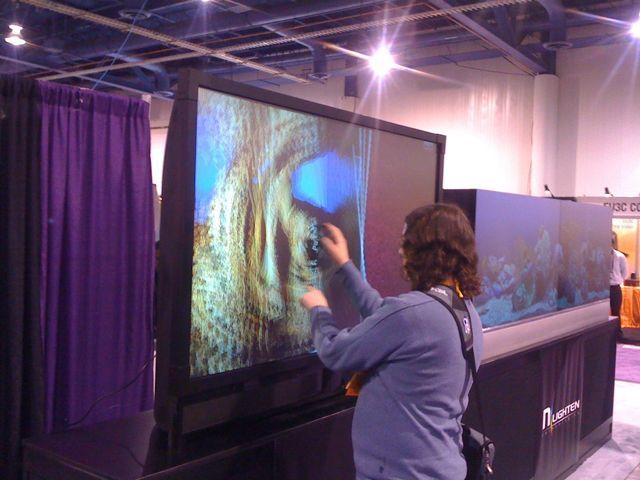
Here, [Devlin] can be seen playing with a multitouch setup. We inspected it and found 4 lasers, located in the corners. We are pretty sure we have seen this exact setup before. There wasn’t really much of a booth there, so we played with the TV and then kept moving.
We also ran into a reader of Hack A Day and totally forgot to take his picture. Sorry man, if you run into us again, we’ll get you.











